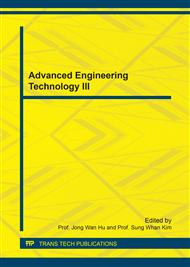[1]
eMarketer. How Southeast Asia Uses Smartphones Users in Malaysia Spend More Time with Mobile than their Neighbors. (2016) [on line] (cited on March 28, 2016) from: http: /www. emarketer. com/Article/How-Southeast-Asia-Uses-Smartphones/1013595.
Google Scholar
[2]
I. Farabi, JumlahPesanMelaluiAplikasi Instant Messenger Kini Sudah Lampaui SMS (2013). [Online]. http: /www. trenologi. com/2013043014391/jumlah-pesan-melalui-aplikasi-instant-messenger-kini-sudah-lampaui-sms/ [25 Februari 2014].
Google Scholar
[3]
V. Venkatesh, J. Thong, X. Xu, Consumer Acceptance and Use of Information Technology: Extending the Unified Theory of Acceptance and use of technology, MIS Quarterly, 36(1) (2012) 157-178.
DOI: 10.2307/41410412
Google Scholar
[4]
Indrawati, M. Raman, M. Ariyanti, K. W. Chew. A Proposed Model for Measuring Instant Messenger Applications Adoption Among Indonesians and Malaysians. Proceedings of the 4th International Conference on Technology Management, Business and Entrepreneurship (ICTMBE) 24th-25th November 2015 Kings Green Hotel Melaka, Malaysia, (2015).
DOI: 10.4028/www.scientific.net/amm.865.720
Google Scholar
[5]
Indrawati, Behavioral Intention to Use 3G Mobile Multimedia Services in Indonesia (Doctoral Dissertation, Multimedia University, July 2012).
Google Scholar
[6]
I. Im, S. Hong, M. S. Kang, An International Comparison of Technology Adoption (2007) [Online]. Available: http: /www. infotech. monash. edu. au/research/centres/cdsesr/papers-pdf/a275. pdf\ [2009, June 18].
Google Scholar
[7]
V. Venkatesh, M. G. Morris, G. B. Davis, F. D. Davis, User acceptance of information technology : toward a unified view, MIS quarterly, 27(3) (2003) 425-478.
DOI: 10.2307/30036540
Google Scholar
[8]
Y. L. Wu, Y. Tao, P. C. Yang, The use of unified theory of acceptance and use of technology to confer the behavioral model of 3G mobile telecommunication users, J. Statist. Manag. Syst. 11(5) (2008) 919-949.
DOI: 10.1080/09720510.2008.10701351
Google Scholar
[9]
Indrawati, The Use of Modified Unified Theory of Acceptance and Use of Technology to Predict the Behavioural Intention toward Website (A Case Study in ABC University in Indonesia), Appl. Mech. Mater. 568-570 (2014) 1586-1592.
DOI: 10.4028/www.scientific.net/amm.568-570.1586
Google Scholar
[10]
Indrawati, K. S. Haryoto, The Use of Modified Theory of Acceptance and Use of Technology 2 to Predict Prospective Users' Intention in Adopting TV Streaming. Proceedings of the International Conference on Computing and Informatics (ICOCI), 11-13 August (2015).
Google Scholar
[11]
M. Limayem, S. G. Hirt, C. M. K. Cheung, How Habit Limits the Predictive Power of Intention: The Case of Information System Continuance, MIS Quarterly, 31(4) (2007) 705-737.
DOI: 10.2307/25148817
Google Scholar
[12]
J. F Hair, W. C. Black, B. J. Babin, R. E. Anderson, Multivariate Data Analysis: A Global Perspective. New Jersey : Pearson Education, Inc. (2010).
Google Scholar
[13]
U. Sekaran, Research methods for Business, A Skill Building Approach. Fourth Edition. Singapore: John Wiley & Sons Inc. (2003).
Google Scholar
[14]
D. M. Levine, T. C. Krehbiel, M. L. Berenson, Business Statistics A First Course (4 ed. ). New Jersey: Pearson Prentice Hall. (2006).
Google Scholar
[15]
A. Field, Discovering Statistics Using SPSS. 3rd Edition. London: Sage. (2009).
Google Scholar


